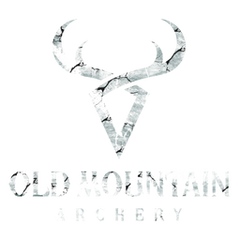The History of Korean Traditional Horse Bow: Zen
When delving into the world of archery, many enthusiasts inquire about the rich history of Korean traditional bows and the remarkable shooting skills of Korean archers. A critical aspect of this proficiency can be traced back to the deep roots in Korean military history.
We will delve into the reasons behind why Korean archers excel in the sport of archery and how their unparalleled strength is intricately linked to the historical trajectory of Korea.

History of Korean Traditioanl bow
Suryeopdo
In ancient Korean culture, the bow held a revered status as the symbol of the king, while arrows were imbued with the essence of sunlight. It was believed that a skilled marksman possessed the ability to control the sun itself, embodying the power and authority of the king. This symbolism is evident in the historical narrative of Jumong, the revered founder of the ancient Korean kingdom of Goguryeo, whose very name translates to "one who is skilled with the bow."
The legacy of Goguryeo's mastery of the bow and arrow on horseback is widely recognized, with historical accounts showcasing their exceptional prowess in archery. A notable example is the vivid depiction found in the Muyongchong tomb from the Goguryeo period, unearthed in the former Manchurian region. The intricate painting, titled Suryeopdo (painting of hunting), captures the vibrancy and strength of the Goguryeo people in action.
GakGung
Among the diverse array of bows found worldwide, three predominant types stand out: the dansungung (simple bow), ganghwagung (backed bow), and hapseonggung (composite bow). The dansungung, crafted from wooden or bamboo sticks, was favored in regions of North America, Oceania, and sub-Saharan Africa, and saw usage in northern European areas during the Middle Ages.
In contrast, the ganghwagung a reinforced body bound with string to enhance durability, with archaeological remnants unearthed from Mesolithic sites in Northern Europe. Variants of this bow, strengthened by wood wrapping, have been documented in diverse locations spanning from the Aru Islands of Indonesia to African pygmy territories, and even in Northeast Asia and Alaska.
The hapseonggung represents a refined iteration of the ganghwagung, believed to have originated from nomadic tribes in central Asia. This sophisticated composite bow, discovered along the Mediterranean coast and across central Asia, China, and western North America, is constructed by bonding two wooden sheets with glue or affixing animal tendons to the bow's back. Renowned for its strength and compact size, the hapseonggung emerged as the weapon of choice among horse riders, showcasing the culmination of bow craftsmanship across cultures and civilizations.

A painting by Kim Hong Do shows a seonbi (an intellectual from the Joseon Dynasty) using a bow and arrow during the 18th century Joseon period.
The Evolution of Korean Archery: From Military Necessity to Cultural Tradition
In the sixteenth century, Japan Invaded the country and the traditional archery of the Korean military would be vital. The war saw many lives lost on both sides but Korea eventually won through, largely as a result of employing archers to rain down lethal salvos of arrows on their opponents at long range. After this, civilian shooting ranges began to appear in the country as a way of training the population against potential future invasions and to further enhance the tradition of martial and ritual archery in Korea.

Embedded in the historical fabric of Korea, archery stands as a cherished pastime that has evolved into a national passion, culminating in South Korea's global dominance in the sport. Renowned for producing top-ranked competitors, South Korea's archery legacy is rooted in a culture that values precision, discipline, and dedication.
The journey begins early for aspiring archers in South Korea, with children immersing themselves in the sport during primary school and honing their skills through rigorous practice sessions that can span up to two hours daily. Exceptional talents are nurtured through high-quality coaching in high school and college, cultivating a rich talent pool that has propelled South Korea to unparalleled success on the world stage since the latter half of the twentieth century.
To maintain their competitive edge, elite South Korean archers undergo grueling training regimens that see them dedicating up to ten hours daily, rain or shine. Practicing over two and a half thousand arrows weekly, these athletes prioritize mental fortitude and unwavering focus to continually refine their skills and performance.
As South Korea continues to reign supreme in world archery, the ancestral tradition of archery thrives as a revered sport, embodying a legacy of excellence and pride among its populace. Through unwavering dedication and a commitment to mastery, South Korea has established itself as the epitome of archery prowess, a testament to the enduring spirit of tradition and sporting achievement in the country.

ⓒ뉴시스
Embracing Tradition: Unveiling the Legacy of the Zen Horse Bow by Old Mountain
Old Mountain preserves the enduring legacy of the Korean horse bow through its iconic Zen collection. Each Zen Horse bow embodies the rich traditional Korean design, seamlessly blending the essence of ancient craftsmanship with modern materials to achieve a harmonious fusion of performance, quality, and aesthetic beauty.
With a steadfast commitment to upholding the heritage of traditional Korean archery, Old Mountain remains dedicated to crafting each Zen Horse bow with meticulous care and attention to detail. By choosing a Zen bow, you embark on an immersive journey through the annals of our traditional history, experiencing the timeless elegance and prowess of Korean archery firsthand.
Embark on your own legacy with a Zen Horse bow from Old Mountain, where the artistry of the past converges seamlessly with the innovation of the present, ensuring a transcendent archery experience rooted in tradition and excellence.



I used to be able to find good info from your blog posts. https://www.waste-ndc.pro/community/profile/tressa79906983/
I used to be able to find good info from your blog posts. https://www.waste-ndc.pro/community/profile/tressa79906983/
Leave a comment